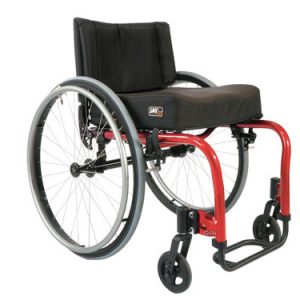Manual Wheelchairs
Many of our manual wheelchair clients describe their wheelchair as an extension of their body. Since they are spending 8-18 hours a day in the wheelchair, it is crucial to ensure that it is configured to optimize performance and comfort. GCM only employs ATP (Assistive Technology Professional) certified evaluators to ensure that they have the seating and positioning training and equipment knowledge to help you choose the right manual wheelchair, the first time.

There are 3 main types of manual wheelchair to choose from: Rigid, Folding and Tilt-in-Space.

Rigid Wheelchairs
Folding Wheelchairs



